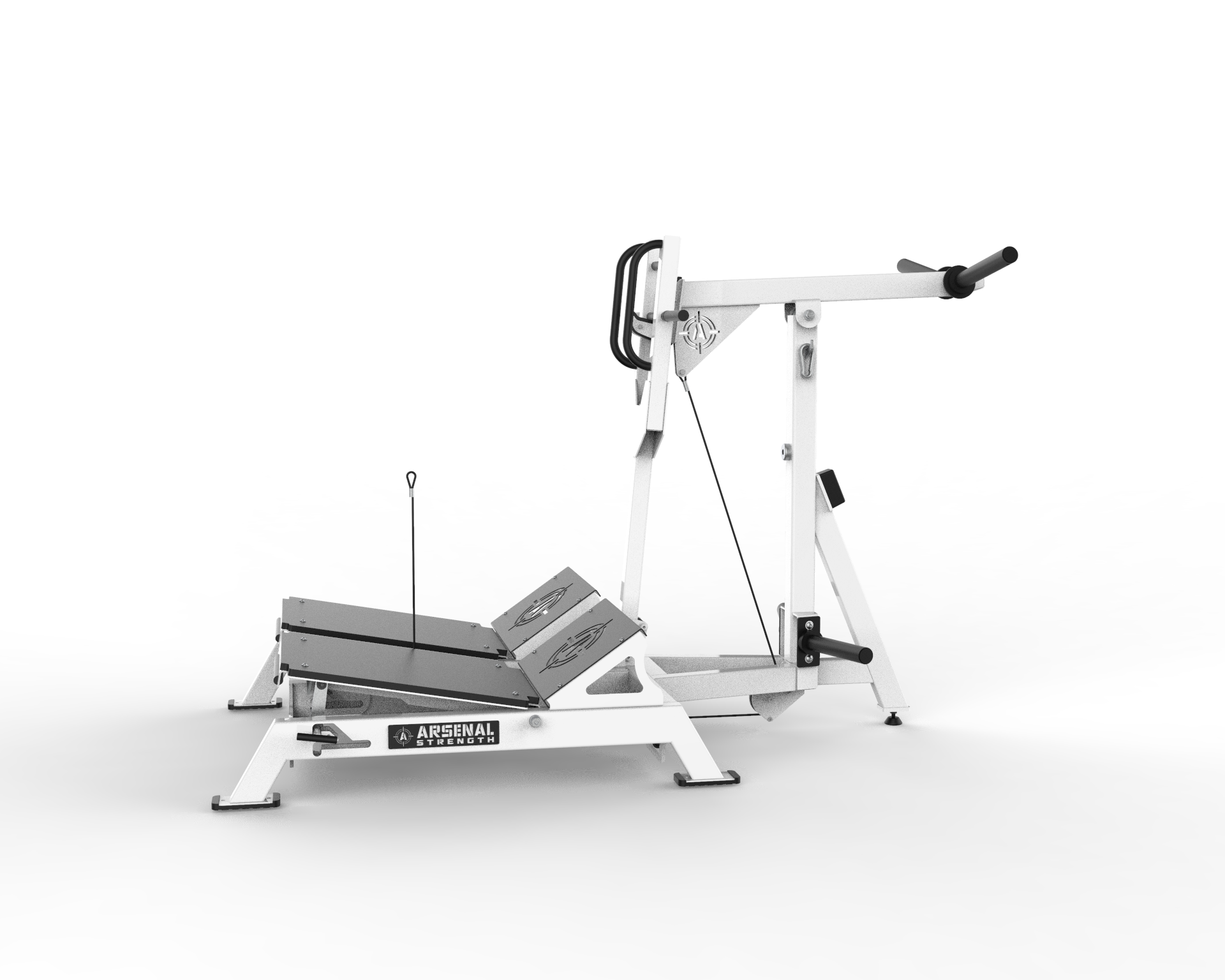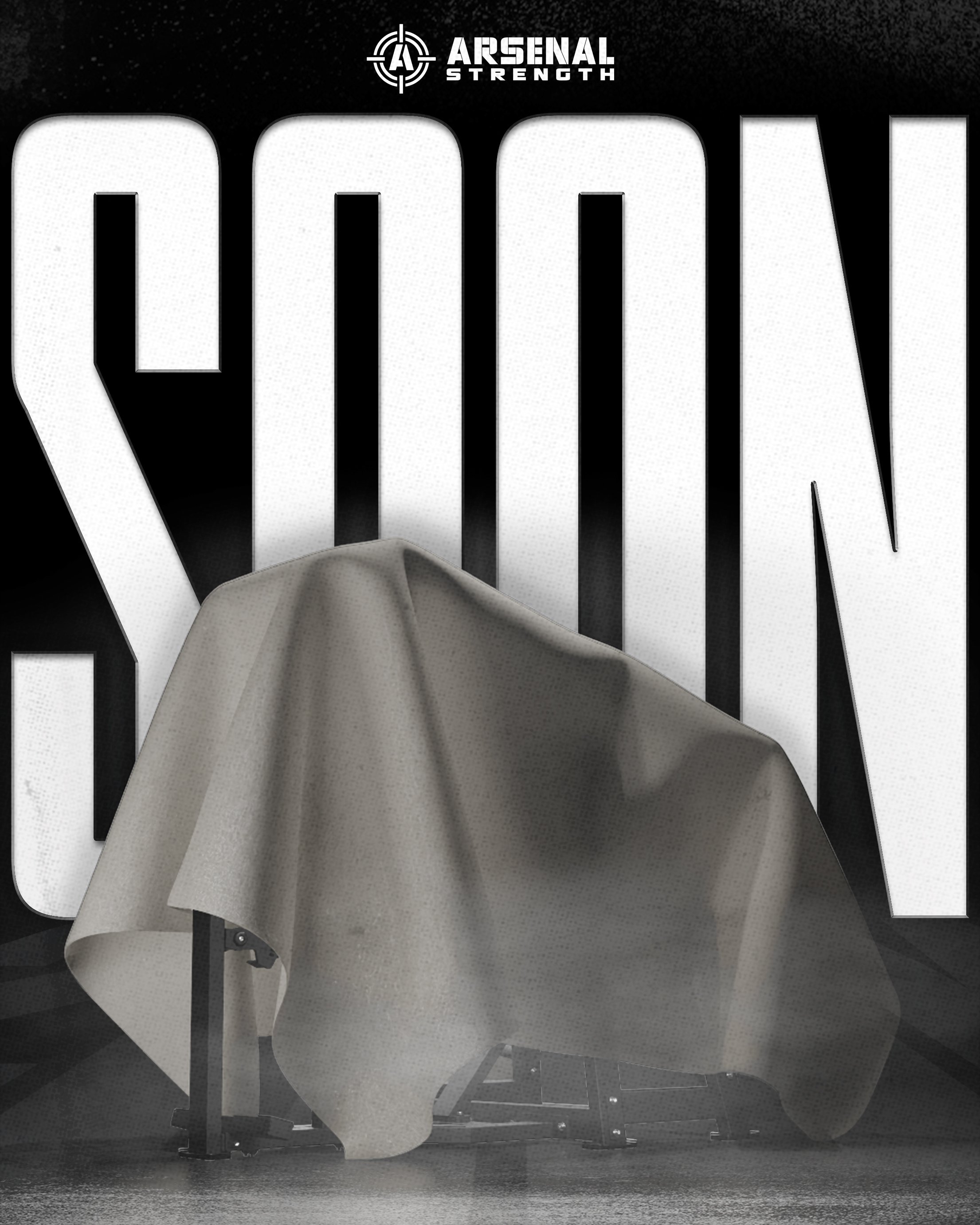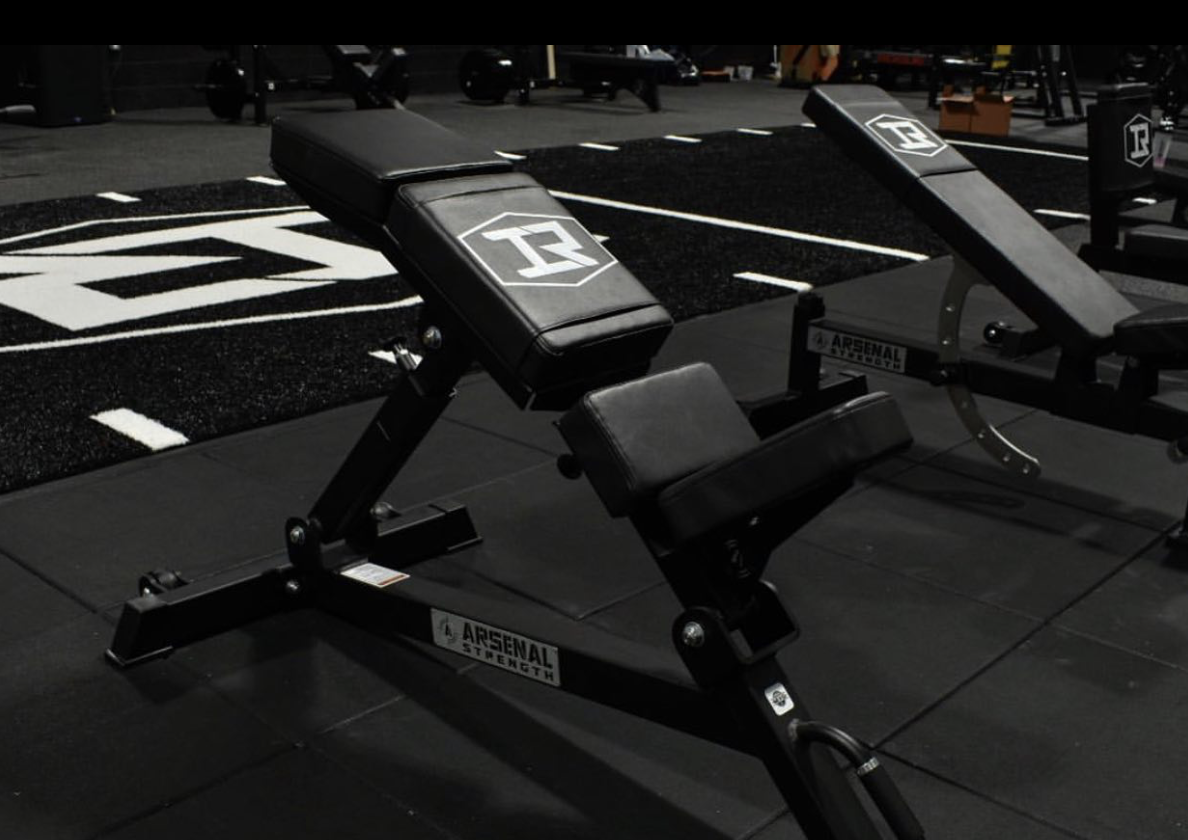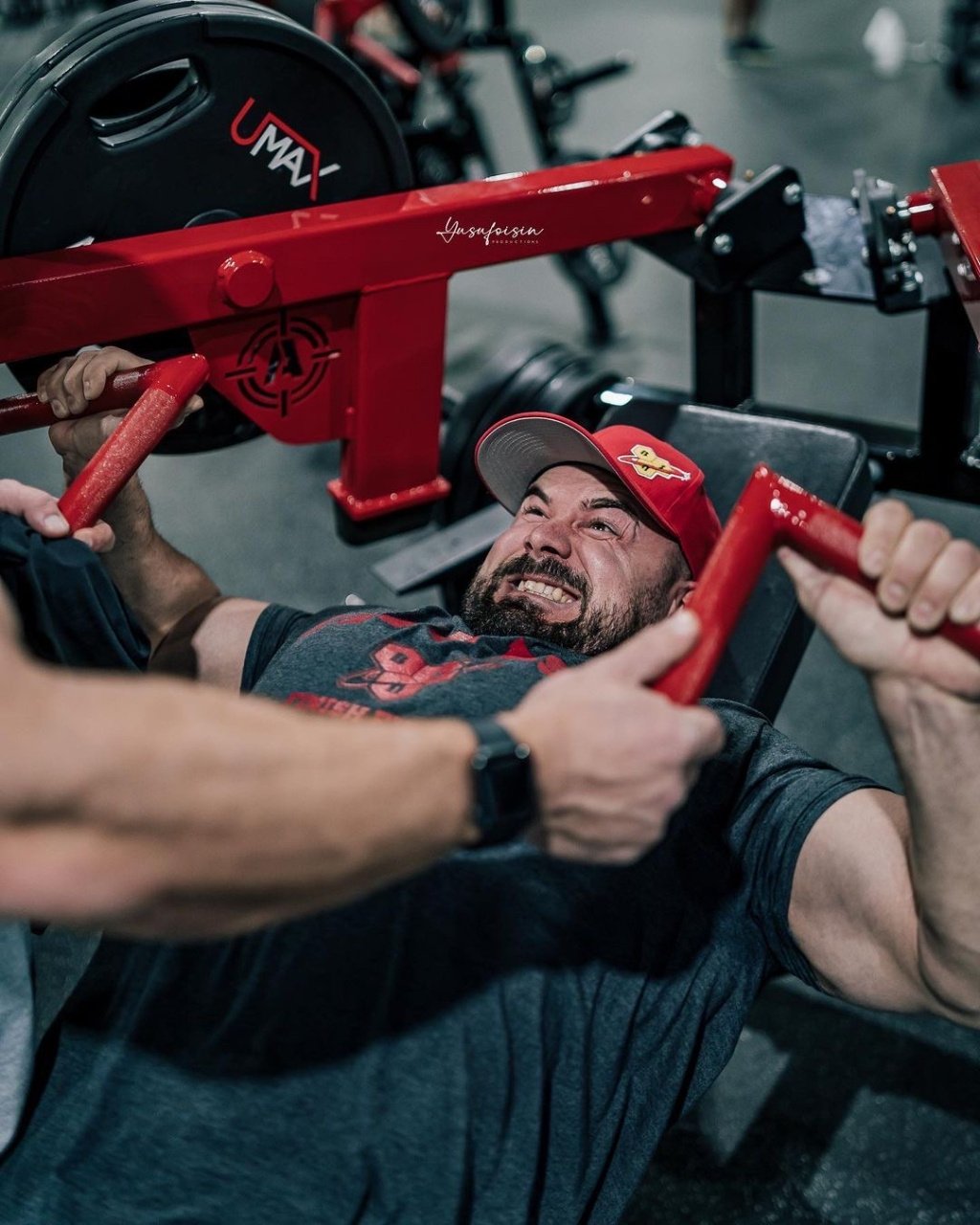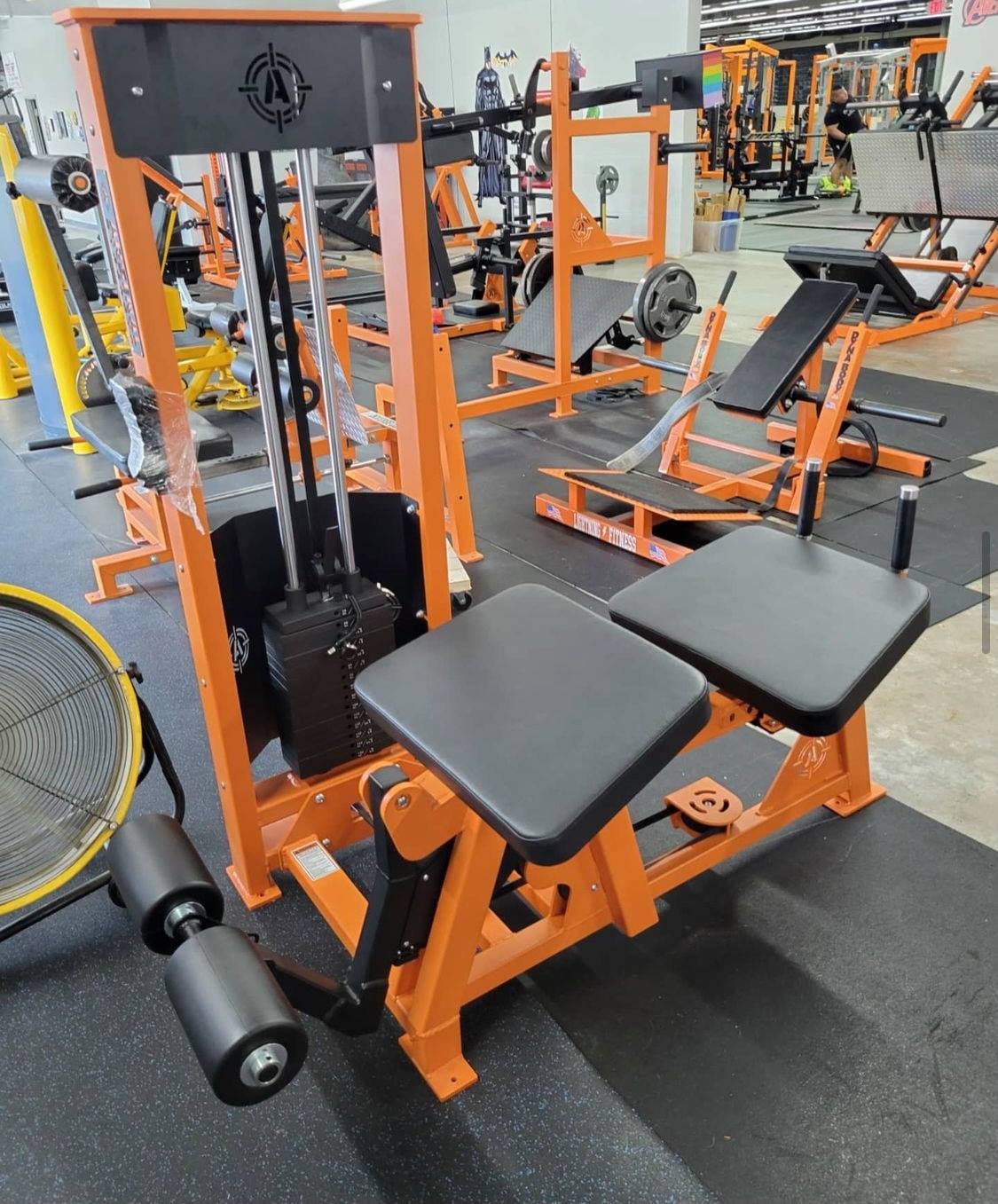Build Lower Body Strength with the Power Squat Exercise
The power squat exercise is a must for building lower body strength and power. This guide covers everything you need to know, from benefits and techniques to variations and safety tips.
- Power squats enhance lower body strength and athletic performance through explosive movements that target key muscle groups like quadriceps, hamstrings, and glutes.
- Proper execution of power squats involves maintaining alignment and core engagement to prevent injuries, with attention to starting position and motion technique.
- Incorporating variations and complementary exercises into a power squat routine can maximize strength gains, while proper safety measures and equipment are essential for effective training.
Benefits of Power Squats
Incorporating variations of squats that focus on power into your exercise regimen can lead to substantial enhancements in strength and stamina within the lower body. Engaging in these types of squats consistently assists not only in building power throughout the lower body, but also augments athletic abilities and boosts overall levels of fitness.
Explosive forms of squat exercises, such as those focusing on power generation, are particularly advantageous for athletes since they stimulate fast-twitch muscle fibers. These fibers are essential for activities demanding speed and explosive movements like sprinting or jumping. By prioritizing quick leg extensions through hips, knees, and ankles during these squats, there is a marked improvement seen in an athlete’s vertical leap ability.
Proper execution of power-focused squatting strengthens the lower body effectively while simultaneously safeguarding against injuries by engaging various muscle groups and maintaining correct alignment. As part of a comprehensive workout plan aimed at enhancing lower body muscular potency, integrating these powerful squat variants proves extremely beneficial.
Key Muscles Worked

Squats that focus on power development are crucial for the lower body, engaging major muscle groups such as the quadriceps, hamstrings, and glutes. These muscles play a vital role in enabling explosive movements of the lower body. The squat exercise is particularly effective in augmenting strength throughout these areas due to its intense engagement of these muscle groups. This type of squat also works out the calves and core muscles comprehensively to promote stability while boosting overall muscular involvement.
Strengthening key elements like glutes, hamstrings, quadriceps, and core through power squats not only elevates your ability for potent lower body movement but also aids in enhancing performance across various athletic pursuits as well as daily tasks. Enhanced balance and posture alongside augmented functional fitness can be attributed to incorporating squats into an exercise regimen focused on building robustness within essential muscle components related to lower-body exertions.
Proper Technique for Power Squats
Perfecting the appropriate squatting form is essential for harnessing maximum benefits and reducing the likelihood of harm while performing power squats. These more dynamic versions of regular squats are aimed at activating numerous muscles in the lower body to cultivate strength and explosiveness. It’s important to keep a straight spine, align your knees with your toes, and place the barbell properly on your shoulders.
Using suitable gear such as squat racks and safety bars can significantly boost both safety levels and performance outcomes when engaging in power squats.
Starting Position
Initiating the squat with the correct posture is crucial for a potent lower body workout. Stand with your feet spread at shoulder width and angle your toes outward slightly to foster stability. Position the barbell across your upper back, avoiding contact with your neck, to balance the weight properly and ensure a firm hold on it. Maintain an upright chest, retract your shoulders, and brace your core throughout the exercise to keep a straight back.
This setup not only optimizes performance but also minimizes injury risks during execution of this lower body power movement. By establishing an appropriate stance and weight from which to start, you lay down the groundwork for executing forceful yet controlled squats that prioritize enhancing strength and generating power in a standing position.
Execution and Motion
The power squat is initiated by carefully lowering the body, after positioning yourself with a barbell rested across your upper back and feet set shoulder-width apart, pointing outward at a slight angle. The motion involves simultaneously bending at the hips and knees while keeping your core tight and spine in a neutral position to ensure proper form as you descend slowly into deep knee flexion.
The stretch shortening cycle enhances power and efficiency in workouts by improving force output and reducing energy expenditure during explosive tasks. To emerge from the bottom of this movement, an explosive push upward should be employed through extending both hips and knees. This swift rise serves not only to amplify strength but also contributes significantly to enhancing athletic ability due to increased force output and power generation. Throughout this exercise, it is essential that you sustain control over every aspect of the motion in order to avoid injury risks while optimizing its efficacy for physical development.
Common Mistakes to Avoid
During power squats, a prevalent mistake is the inward collapse of the knees, commonly referred to as knee valgus. Such incorrect foot alignment during squat movements can result in substantial injuries and must be addressed by ensuring correct positioning of both foot and knee. To avoid injury and maintain good form throughout squats, it’s vital to keep your knees tracking over your toes.
Another routine fault seen while performing squats is rounding out the lower back, which poses a severe risk for injury. To counter this problem, one should focus on preserving a neutral spine posture while concurrently engaging their core muscles to provide stability for their back during every stage of the movement. It’s crucial that individuals manage the descent phase with control and precision so as not inadvertently execute rapid or haphazard movements that could undermine proper form thus escalating the chance of sustaining an injury.
Variations of Power Squats
Incorporating various squat variations, such as jump squats with a barbell, box squats, and Anderson squats, into your training routine can enrich the diversity of exercises you perform. These alterations not only target different muscle groups to enhance muscular engagement but also keep your workouts from becoming repetitive. Utilizing these power squat variations and adaptations helps build muscle strength and improves athletic performance across the board.
Barbell Jump Squat
The barbell jump squat is an energetic exercise that predominantly works the glutes, quads, hips, and hamstrings. It involves a combination of a standard squat followed by a high-intensity jump which makes it highly effective for boosting lower body strength and power. Adding such plyometric movements like jump squats to your training can significantly enhance explosiveness as well as vertical leap capabilities.
- To carry out the barbell jump squat effectively:
- Begin in a typical squat stance with the barbell positioned on your upper back.
- Go into the squat phase.
- Propel yourself upward with an explosive motion from the lowest point while keeping control over the barbell.
- Ensure you land gently after each jump.
- Return without delay to another repetition so as to preserve its dynamic nature essential for developing plyometric advantages.
By performing these steps correctly within your workout regimen, this powerful exercise will target key muscle groups throughout your lower body and help improve overall movement performance in activities demanding significant leg power and controlled explosivity when jumping or lifting heavy loads during athletic performances or routine fitness activities involving similar movements such as lunges or deadlifts.
Box Squat
Athletes find box squats extremely useful for bolstering the strength and power in their hips and lower body. Squatting down to a predetermined height, such as that of a bench or box, facilitates maintaining correct squat depth and technique while reducing the likelihood of injury. Box squats play a crucial role in fostering explosive power along with enhancing overall strength within the lower extremities.
When attempting to execute a box squat, adhere to these guidelines.
- Place either a bench or box just behind you.
- Assume the conventional squat stance with your upper back supporting the barbell.
- Descend until you are sitting on the box.
- Use an upward thrust from your heels propelling yourself back up into standing position.
Employing this methodical movement aids not only in building muscular strength, but also ensures stability throughout one’s lower body during performance of squats.
Anderson Squat
The Anderson squat, sometimes referred to as the pin squat, is designed to enhance strength and power throughout a partial range of motion in the lower body. Initiated from a complete stop, this exercise requires you to begin with the barbell on pins or supports positioned at your lowest squat point. Explosively extending upward by snapping the bar up through the knees completes one repetition. The Anderson squats excel in boosting power and strength specifically within your lower extremities.
To execute an Anderson squat accurately, place and load the barbell onto pins so that it aligns with your thighs being parallel to the floor when you’re underneath it. Secure yourself under the bar, ensure your core muscles are activated, then proceed to forcefully press upwards until you reach full extension.
For those attempting to perform this movement variation with maximum efficiency in mind should consider lifting between 80-90% of their single-rep max capacity. Aiming for sets consisting of two up to four repetitions each within this optimal intensity bracket.
Integrating Power Squats into Your Workout Routine
Advanced squat variations and exercises are instrumental in boosting athletic performance as they improve muscle elasticity and increase power output. Seasoned lifters utilize these techniques to surpass training stagnation, thereby augmenting their overall strength capacity.
Programming Tips
When devising a regimen for power squats, it’s important to tailor the number of sets and repetitions to align with your objectives. For those aiming to bolster strength, target 4-8 repetitions per set. If building muscle mass is the goal, opt for a range of 8-12 reps per set. The duration of rest intervals should be adjusted in correspondence with the intensity level of your workout. Longer pauses are recommended after heavy lifts to ensure muscles adequately recuperate and the risk of injury is minimized.
Incorporating a spotter during sessions involving substantial weights can greatly enhance safety measures and help dodge potential mishaps. Maintaining clear lines of communication between the individual performing the lift and their spotter is vital when handling hefty loads.
To optimize gains from power squats effectively, incrementally escalating the rigor through progressive overload will contribute substantially towards consistent enhancements in muscular strength.
Complementary Exercises
Integrate supplementary exercises such as goblet squats and front squats to boost the efficacy of power squats. By targeting similar muscle groups, these exercises add diversity to your routine and aid in avoiding stagnation, while also maintaining an engaging workout experience. Incorporating lunges and deadlifts is equally beneficial. They engage numerous muscles throughout the lower body, fostering enhanced strength and equilibrium.
Incorporating a variety of movements that target distinct muscle groups into your regimen results in a comprehensive workout for the lower body. This strategy not only augments overall muscular strength, but also promotes general fitness levels, leading to a more rounded and potent training program.
Safety Considerations and Equipment
Ensuring safety is critical when executing power squats, and utilizing the proper gear substantially minimizes injury risks. To carry out power squats securely and efficiently, one can employ various equipment including dumbbells, barbells, kettlebells, medicine balls, resistance bands, and yoga balls.
The HOIST® features an ergonomic pad designed for correct posture and a straightforward lockout mechanism for added security during use. Power Squat provides essential safety attributes to facilitate a safe and effective exercise and sport routine.
Using Resistance Bands and Chains
Utilizing resistance bands and chains can significantly bolster strength development during a power squat regimen by offering fluctuating resistance with each movement. These instruments are highly beneficial in amplifying speed strength, as well as boosting general performance when employed appropriately. The Exerfly exemplifies this approach through its inclusion of safety elements like the squat harness, squat belt, and T bar for a more secure training session.
The implementation of squat harnesses and belts is critical for enhancing security throughout power squat exercises. Such precautions are vital to prevent injuries while ensuring efficient and safe training practices.
Spotting and Support
During power squats, spotters play a critical role in safeguarding lifters by stepping in if there’s any deviation from correct form or an unforeseen loss of control. The implementation of safety bars and squat racks acts as essential support mechanisms for heavy lifts, guaranteeing that equipment will intervene to avoid severe harm should the lifter fail to maintain control. Injury prevention is Aided through thorough warm-up exercises and adherence to proper lifting techniques when executing power squats.
Employment of a squat rack offers robust stability for managing heavy loads while simultaneously diminishing the likelihood of injury by enabling lifters to securely place the barbell back into position after a lift. Paramount for ensuring safe performance under substantial weights is effective communication between the spotter and lifter. This collaboration enhances overall safety during these intense workouts.
Injury Prevention Tips
By enhancing the strength of muscles, tendons, ligaments, and bones via power squats, one can improve their stance, equilibrium, flexibility and posture. This improvement translates to more effortless daily movements and a decrease in discomfort in the lower back. It’s critical to activate your core during power squats as failure to do so may result in straining your back. Thus emphasizing the necessity for correct technique along with core activation. Power squats carried out accurately also minimize risks associated with injuries involving knees or ankles while fortifying leg muscles and boosting overall power output.
To avoid harm when executing squat exercises, it is crucial to keep an appropriate alignment throughout the movement of squatting. Ensuring that your knees stay parallel with your toes rather than caving inward helps prevent injury. Activating the core muscles aids in keeping a neutral spine position which avoids strain on the back while simultaneously ensuring safety during these powerful squats.
Advanced Power Squat Techniques
Advanced lifters aiming to enhance their performance and overcome training stagnation can employ sophisticated power squat methods, such as tempo squats and eccentric overload. These tactics not only diversify one’s fitness routine, but also activate various muscle fibers more effectively, leading to increased strength gains and improvements in overall physical conditioning.
Accommodating Resistance
Utilizing accommodating resistance techniques, including chains and bands, can substantially boost the force output when appropriately applied. The variable resistance they offer during a squat movement intensifies the necessary force at varying stages, thereby amplifying strength development. Integrating resistance bands in squat exercises bolsters speed strength while also improving overall performance.
The employment of chains and bands provides a heightened workout experience that engages various muscle groups more effectively to augment force production. This strategy proves advantageous for athletes and seasoned lifters aiming to elevate their training outcomes and break through plateaus in their training regimen.
Tempo Squats
Tempo squats are a variation of the traditional squat that emphasizes controlling the movement’s speed to enhance strength development. During tempo squats, it is important to manage the lowering phase carefully, hold a deliberate pause at the lowest point, and then ascend with power while being mindful of each segment’s duration. This approach concentrates on building both muscle strength and control through precise execution.
Altering the pace of your squats can lead to greater engagement of muscles, prolong time under tension, and bolster overall gains in strength. It is crucial to keep correct form while performing squats and adjust your speed as necessary not only for preventing injuries but also for optimizing outcomes.
Eccentric Overload
Training with an emphasis on the eccentric phase, where muscles lengthen under tension, not only fortifies muscle and connective tissues, but is also advantageous for recovery purposes. Concentrating on this portion of squats can amplify the power generated during the concentric phase—the lifting part—thereby boosting overall power output. This form of training elevates muscular stamina and lessens the possibility of injury amid rapid and forceful movements.
Employing a method such as “2 up, 1 down” during squat exercises introduces varying levels of resistance that encourages more profound adaptation in muscle strength. Overlooking the potential benefits brought about by eccentric training could mean forfeiting significant enhancements to athletic performance. By intentionally and slightly delaying deceleration when interacting with devices like flywheels, one can concentrate their force production within a condensed duration for improved training effectiveness.
Squats that are focused on power and their numerous adaptations provide a robust method to amplify strength in the lower body, boost athletic capabilities, and elevate overall physical fitness. By honing your technique, embracing more sophisticated approaches, and prioritizing safety measures, you can unlock the full potential of power squats to fulfill your health aspirations.
It’s crucial to recognize that achieving triumph with power squats hinges upon steadfastness in practice, adherence to correct posture during exercise routines, as well as an eagerness to take on novel methods and variations. Whether you’re striving for enhanced sports performance or looking forward to increasing lower body power as part of your general fitness regimen, incorporating power squats is indispensable for propelling yourself toward elevated achievements.
Frequently Asked Questions
What are the primary benefits of power squats?
Power squats boost lower body strength, increase muscle mass, and enhance athletic performance. They effectively improve vertical jump ability and engage multiple muscle groups, contributing to injury prevention.
Which muscles do power squats target?
Squats are a potent exercise for increasing strength in the legs and lower body, focusing on critical muscle groups such as the quadriceps, hamstrings, glutes, core muscles, and calves.
By integrating power squats into your workout regimen, you can achieve notable gains in muscle growth throughout the body.
What are common mistakes to avoid when performing power squats?
To avoid injuries when performing power squats, ensure your knees do not collapse inward and maintain a neutral spine.
Focus on controlled movements and proper alignment throughout the exercise.
How can I integrate power squats into my workout routine?
Incorporating power squats into your exercise regimen can elevate your athletic prowess and assist in surpassing performance stagnation.
It’s important to diversify the variations of squats you perform, maintain a balanced approach to setting up your sets and repetitions, take proper rest intervals, and always emphasize safety by using a spotter.
What are advanced power squat techniques?
Incorporating advanced techniques into your power squat routine, such as employing tempo squats, focusing on eccentric overload, and utilizing accommodating resistance tools like bands and chains, can intensify muscle activation and amplify overall training performance.
Adopting these tactics has the potential to greatly boost the outcomes of your squat exercises.
Additional Resources:
Bilateral Leg Press
Pendulum Squat Machine
Belt squat Machine
Remember, consistency and proper form are key to achieving your desired results. So, embrace the challenge and let the Reloaded Power Squat Machine guide you on your journey to stronger, more powerful legs.

